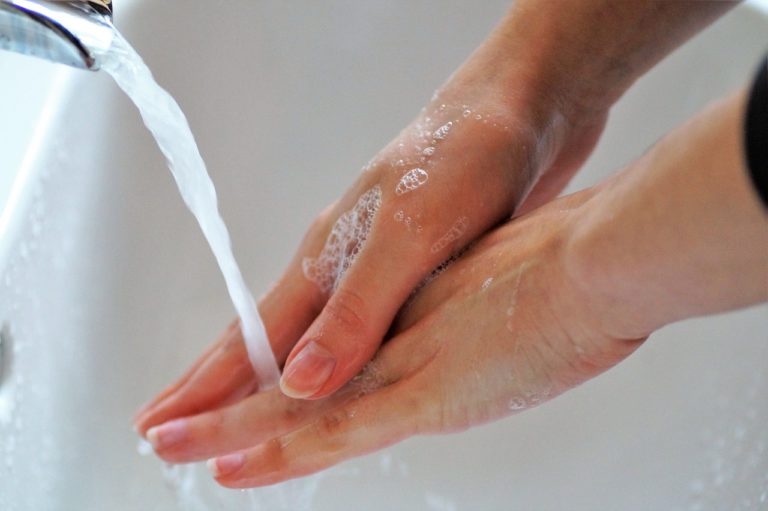Budget-Friendly Methods for Filtering Tap Water
Highlights:
- Tap water can contain contaminants like chlorine, heavy metals, pesticides, and pharmaceuticals.
- Water filtration systems include pitcher filters, under-sink systems, and DIY methods.
- Affordable options include faucet-mounted filters and countertop filters. Consider long-term cost-effectiveness when choosing a method.
- Regularly changing filter cartridges and cleaning the filtration system are important for maintenance.
Discover the secrets to affordable and effective tap water filtration in the comfort of your own home. Say goodbye to expensive bottled water and unpleasant tastes. In this article, we explore budget-friendly options like pitcher filters, under-sink systems, and DIY methods. Ensure clean and safe drinking water without compromising your budget or health. Quench your thirst for knowledge as we dive into the world of tap water filtration!
Common contaminants in tap water

Tap water, although treated by municipalities, can still contain various contaminants that affect its taste, odor, and overall quality. Understanding these contaminants is crucial in choosing the right filtration method for your needs.
One common contaminant found in tap water is chlorine. While it is used to disinfect water, it can leave an unpleasant taste and odor. Additionally, heavy metals such as lead, mercury, and copper can leach into the water from old plumbing systems. Pesticides, herbicides, and pharmaceuticals also find their way into water sources, posing potential health risks.
Understanding water filtration systems
Before diving into the cheapest and most effective ways to filter tap water, it’s important to understand the different types of water filtration systems available.
One popular option is pitcher filters. These affordable filters use activated carbon to reduce chlorine, odor, and some contaminants. They are easy to use and require no installation. However, they may not be as effective in removing heavy metals or reducing the concentration of certain chemicals.
Another option is under-sink filtration systems. These systems are installed directly under the kitchen sink and provide filtered water through a separate faucet. They often utilize multiple stages of filtration, including activated carbon, reverse osmosis, and sediment filters. Under-sink systems are more effective at removing a wide range of contaminants but can be more expensive upfront.
DIY water filtration methods
If you’re looking for a budget-friendly option or want to reduce your environmental footprint, you can consider DIY water filtration methods.
One popular DIY method is using activated charcoal. Activated charcoal can be made by heating charcoal and treating it with steam or chemicals. It is an effective adsorbent and can help remove impurities from water. You can create your own activated charcoal filter by placing activated charcoal in a container and pouring water through it. While this method may not remove all contaminants, it can still improve the taste and odor of tap water.
Another DIY option is using a solar still. A solar still utilizes the heat from the sun to evaporate water, leaving behind contaminants. This method is particularly useful in areas with access to sunlight and limited resources. However, it may not be as effective in removing certain chemicals or heavy metals.
Affordable water filter options

If you’re looking for an affordable and effective water filter, there are several options available in the market.
One option is faucet-mounted filters. These filters attach directly to your existing faucet and provide filtered water on demand. They are easy to install and require minimal maintenance. Faucet-mounted filters often use activated carbon and other technologies to remove contaminants. However, they may have a slower flow rate and may not fit all types of faucets.
Another affordable option is countertop filters. These filters sit on your countertop and connect to your faucet using a diverter valve. They are easy to install and provide filtered water for drinking and cooking. Countertop filters often use activated carbon and ceramic filters to remove impurities. However, they may take up space on your countertop and may not be suitable for small kitchens.
Comparing the cost-effectiveness of different water filtration methods
When it comes to choosing the cheapest and most effective way to filter tap water, it’s important to consider the long-term cost-effectiveness of each method.
Pitcher filters may seem affordable upfront, but replacement filters can add up over time. On the other hand, under-sink systems may have a higher initial cost, but their filters often last longer and are more cost-effective in the long run.
DIY methods, such as activated charcoal filters and solar stills, can be the most budget-friendly options. However, they may require more effort and may not provide the same level of filtration as other commercial filters.
Other ways to improve tap water quality

While water filtration is an effective way to improve tap water quality, there are other measures you can take to further enhance the taste and safety of your drinking water.
One simple step is to let your tap water sit for a few minutes before using it. This allows any chlorine or volatile organic compounds to dissipate, resulting in better-tasting water.
You can also consider using a water softener if your tap water has a high mineral content. Water softeners remove minerals like calcium and magnesium, which can cause hard water and affect the taste of your water.
Tips for maintaining and prolonging the life of your water filter
To ensure the longevity and optimal performance of your water filter, it’s important to follow proper maintenance practices.
Regularly changing the filter cartridges is essential to maintain the effectiveness of your filtration system. Most filters come with a recommended replacement schedule, so be sure to check and follow the manufacturer’s instructions.
Additionally, cleaning the filter housing and other components of your filtration system can help remove any buildup and prevent clogging. Regularly flushing the system with clean water can also help remove any trapped contaminants.
Closing thoughts
With the cheapest and most effective ways to filter tap water now unlocked, you can take control of your drinking water quality without breaking the bank. Whether you opt for a budget-friendly pitcher filter, a more advanced under-sink system, or a DIY method, there is a solution that fits your needs and budget. Remember to consider the contaminants in your tap water, the cost-effectiveness of different filtration methods, and additional measures to improve water quality. By making an informed decision and following proper maintenance practices, you can enjoy clean, safe, and great-tasting water for you and your family. Cheers to unlocking the secrets of tap water filtration!







